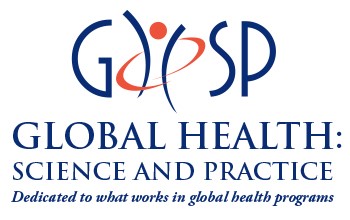Maternal, Newborn, and Child Health
- Helping Babies Breathe, Second Edition: A Model for Strengthening Educational Programs to Increase Global Newborn Survival
The revised neonatal resuscitation curriculum updates not only the science of resuscitation but also the educational and implementation approaches needed to further enhance neonatal survival, including promoting ongoing practice to retain skills and linkages with quality improvement initiatives.
- Use of Mid-Upper Arm Circumference by Novel Community Platforms to Detect, Diagnose, and Treat Severe Acute Malnutrition in Children: A Systematic Review
Limited studies suggest that with robust program inputs caregivers and CHWs can correctly use mid-upper arm circumference to detect severe acute malnutrition (SAM) and that properly trained and supported CHWs can treat uncomplicated SAM in communities.
- Childbirth and Early Newborn Care Practices in 4 Provinces in China: A Comparison With WHO Recommendations
In the 10 hospitals studied, we found that hospital policies, protocols, and interventions only partially align with WHO early newborn care recommendations, and that many hospitals still use outdated and non-medically sound practices.
- Effectiveness of SMS Technology on Timely Community Health Worker Follow-Up for Childhood Malnutrition: A Retrospective Cohort Study in sub-Saharan Africa
In Ghana, Rwanda, Senegal, and Uganda, we found positive association between community health workers (CHWs) using SMS data entry with reminder alerts and timely follow-up for childhood malnutrition screening visits compared with paper forms. This association was strongest when CHWs used SMS data entry consecutively over multiple visits than when they switched between SMS and paper forms.
- High-Risk Advanced Maternal Age and High Parity Pregnancy: Tackling a Neglected Need Through Formative Research and Action
Harmful social norms and lack of knowledge contribute to risky pregnancies in older and high-parity women in low- and middle-income countries. A social and behavior change communication resource combining technical guidance with tangible client and provider materials was designed to address and prevent such pregnancies in Niger and Togo.
- Eliminating Mother-to-Child Transmission of HIV by 2030: 5 Strategies to Ensure Continued Progress
To keep up momentum in preventing mother-to-child transmission we propose: (1) advocating for greater political and financial commitment; (2) targeting high-risk populations such as adolescent girls and young women; (3) implementing novel service delivery models such as community treatment groups; (4) performing regular viral load monitoring during pregnancy and postpartum to ensure suppression before delivery and during breastfeeding; and (5) harnessing technology in monitoring and evaluation and HIV diagnostics.

